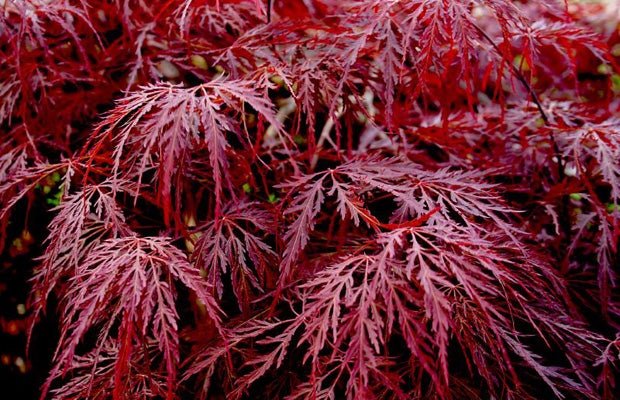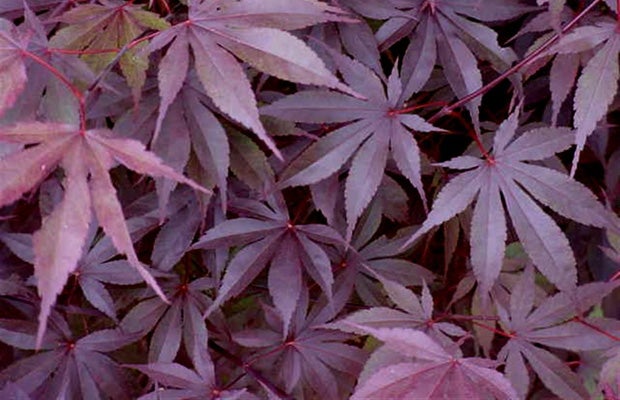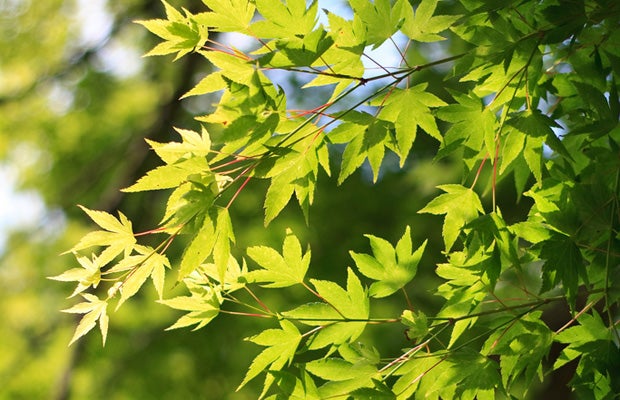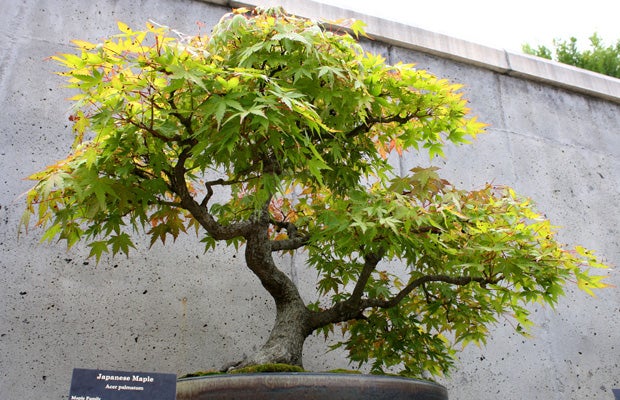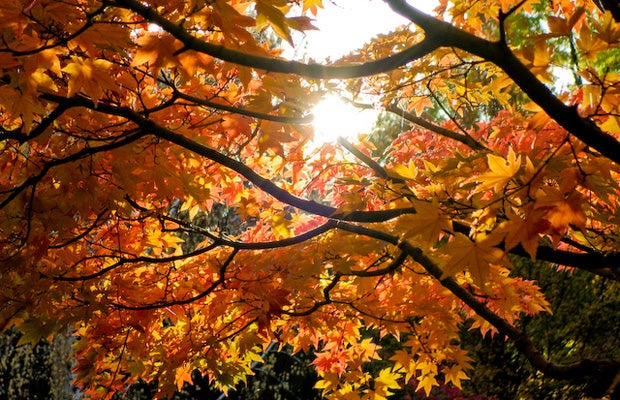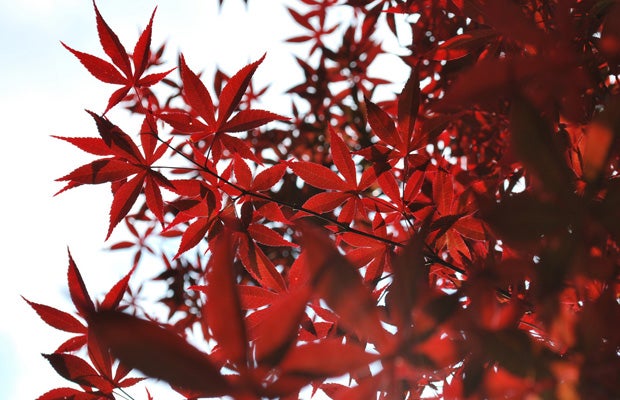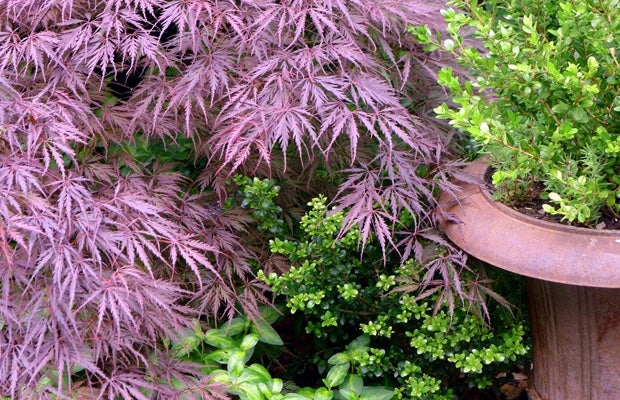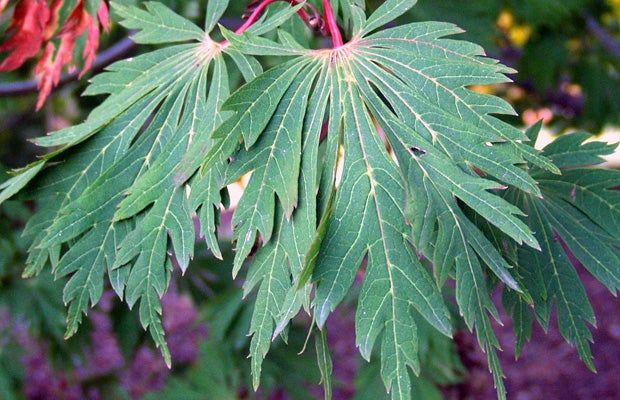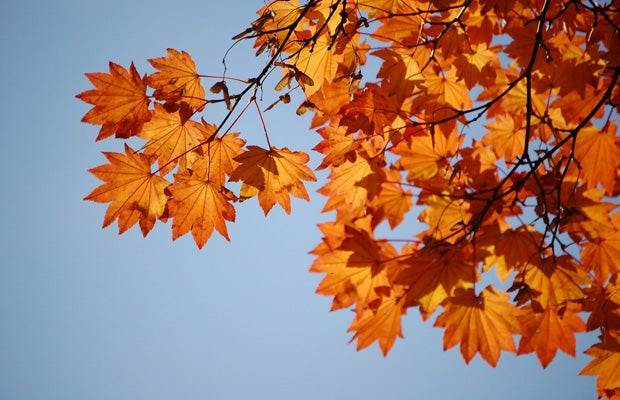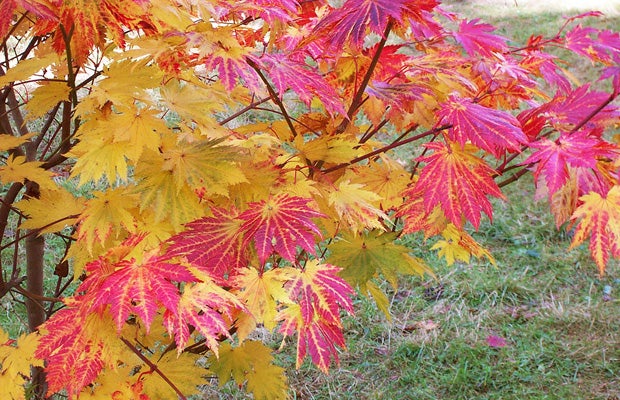What’s the pH of your garden plot?
ListenMike McGrath advises his listeners in guarding against ticks, building a raised bed garden, using rabbit pellets in compost, growing tomatoes upside-down, planning a practical garden, recovering trees from storm damage, how to care for Japanese maples, and testing the pH of your garden soil.
Question of the Week:
My soil (in the Poconos by the Tannersville Cranberry Bog) is, to say the least, acidic. This year, I switched from using lime to raise the pH to Dolomitic Limestone. The bag reads, “For professional use only,” but no indication of how much to use. So I attempted a search on your website for “acid soil,” “alkaline soil,” “pH,” “lime,” and “dolomitic limestone,” but found nothing. How about you revisit the basics for us?
— Ken in Bartonsville, PA
Find out how to establish the right pH level for your plants »
-

Photo by Flickr user Chiot’s Run
Highlights from show for May 11, 2013:
What kind of wood is best to use when building raised beds?
Last year, Keith from Langhorne, PA built a large garden in what he didn’t realize was a less than suitable location. A year wiser, Keith now wants to build some planter boxes that are more mobile if he would need to move them. Mike urges against using pressure treated wood because of its tendency to rot and attract termites, however, he is entirely for the idea of building raised beds in other ways. “Flat ground gardening is 19th century stuff, man. All flat ground gardeners and summer vegetable gardeners should be growing in raised beds. Once you do one, you’ll never go back. Flat ground gardeners keep stepping all over their soil, they have to keep tilling it up, they till up weed seeds, grass invades from the sides, and they spend their entire summer weeding,” Mike says.
Mike strongly advocates that raised beds are never wider than 4 feet (so that you can reach the center from each side) and that there always be two feet in between raised beds for walking. Any kind of untreated wood is fine to use, even cheap pine! Third grade cedar or redwood would last for years, as well as composite lumber such as Trex, which is half recycled wood and half recycled plastic. A final idea for Keith is, “If you’re really talking about having a Lego garden where you can move it from one side of the house to the other… you can’t go wrong with pavers!”
-
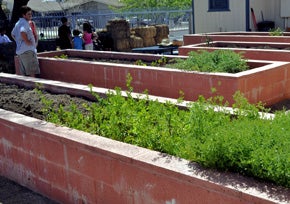
Photo by Flickr user Frank Tellez
“Flat ground gardening is 19th century stuff, man. All flat ground gardeners and summer vegetable gardeners should be growing in raised beds.”
Mike McGrath
Best ways to guard against ticks
Virginia from New Castle County in Delaware needs to find a way to handle the tick invasion in her garden. Fortunately, the solution for her is not to go laboriously hunting for each and every little bug that she can find in the crevices of her garden, but rather to let the pests come to her. While permethrin is not an organic substance, it is a synthetic version of pyrethrum, which was one of the first botanical insecticides made of dried up and crushed Chrysanthemum flowers. Since ticks are highly sensitive to this substance, there is something called a Tick Tube, which are little cotton balls soaked in this substance that are put inside toilet paper core type tubes and placed around the perimeter of the garden. Mice carry the cotton back to build their nests with, and in so doing stop the ticks dead in their tracks!
“That’s why I personally use these things and I feel comfortable recommending them because to me the alternative would be people constantly spraying their property, and that really is not effective against these ticks,” Mike says. “We call these ticks that spread lime disease ‘deer ticks’ but almost none of them have ever seen deer. They all have to spend part of their life cycle on the white footed field mouse…The mice are the real vectors, controlling mice is the real key to controlling ticks. The deer control is helpful, but if you control the mice you’ll never see a tick.”
Using rabbit pellets as a composting material
Judy from Burlington County, NJ is just finishing up the master gardening program and had some questions about using rabbit manure for compost. Judy has been using pressed alfalfa meal for sprinkling on top of her compost to mix in with the kitchen scraps and dried leaves. Mike recommends mixing all of the ingredients together instead of isolating and layering them. In addition, the smaller the pieces, the better for compost, so he suggests crushing the pellets a little bit before he adds it to the compost. A compost aerator would be beneficial to mix up and add air to the compost pile. It is also crucial that enough dried leaves are added to the compost to put a balance in the elements. Mike says, “High nitrogen and high carbon makes perfect compost.”
Do topsy-turvy planters really work for tomatoes?
Dave from Elizabethton, Tennessee purchased topsy turvy tomato planters and asked Mike for guidance in his upside-down tomato growing experiment. As Mike is not a fan of the tomato-in-a-tube system, he grudgingly offered his advice that Dave plant “patio tomatoes“, explaining: “‘Patio tomato’ is one way of describing what’s called the determinant variety. These are the smaller tomatoes, they’re faster to mature, they’re almost all hybrids, and they’ve been bred to produce all of their tomatoes at once and not to grow vines that are longer than four or five feet. There’s some where the taste is OK; some people … just to get tomatoes early in the season will grow them, but these are not the treasured tomatoes of summer that people are after. If you’re going to use one of these fool contraptions, you’re going to need a tomato plant that is going to stay small in size … God did not intend tomatoes to be grown in tubes.”
Mike continues and instructs Dave to water the tubes as frequently as once or twice a day, as the tubes are quick to dry out. He also offers Dave could experiment with a similar hanging system but use large buckets to house heirloom varieties of tomatoes.
“… if you’re going to use one of these fool contraptions, you’re going to need a tomato plant that is going to stay small in size … God did not intend tomatoes to be grown in tubes.”
Mike McGrath
-
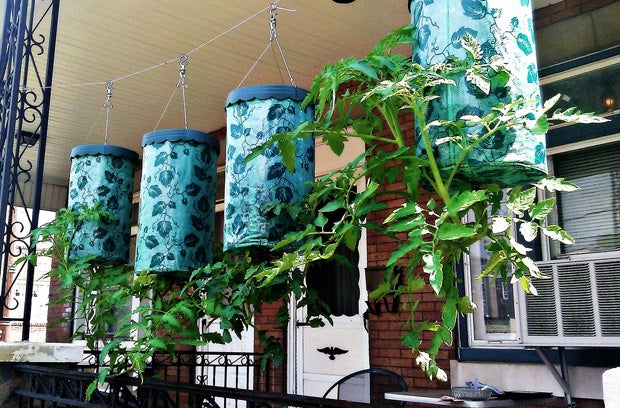
Topsy Turvy Tomatoes – Growing tomatoes upside down. Photo by Flickr user techfun
Planning a practical garden
Donna from Anderson, Indiana is in a new house and looking for advice in planning a 1/2 acre-sized garden that would feed three families. Mike’s first suggestion is that Donna abandon any idea of a flat-ground garden and instead begin planning a raised bed system for the property. This method, he explains, offers the easiest to care for plants and get the most out of her growing area.
In planning crops, Mike explains: “You are going to have your best luck growing the most amount of food early in the season and late in the season with things you can plant very densely, like salad greens and spinach and kale. These are very nutritious, they’re easy to grow, you can grow them in bulk. The fruiting crops, obviously, take quite awhile to come in — you’re not going to get your first tomatoes, even from an early plant — until at least two months since you’ve put the plants in the ground. And since you are in a new house, I would suggest you not try to start any of your own plants; anything like cucumbers, tomatoes, peppers, anything like that you should buy the plants already started this year.”
Helping a willow tree recover from a tough storm season
Peggy from Brigantine, New Jersey is concerned about her willow tree that was damaged by Hurricane Sandy. Following the storm, the soil around her willow tree eroded, exposing its roots. Mike advised that she leave the roots and tree as is if the tree is showing healthy spring buds and seems to be making a comeback. He does recommend testing the salinity of the soil, as tidal waters may have increased the salt levels. Mike explains: “… everybody ‘down the shore whenever these storms blow through — whether it’s Sandy, whether it’s the Halloween storm the year before, these horrifying nor’easters that tend to come in the spring — it can change the coastline and it can change the brackishness of the water in somebody’s backyard. So in a situation like that, the only thing a homeowner can do is make sure there’s as much freshwater as possible to try to get as much of the salt out after the event as possible by saturating the soil with clean water. And then for God’s sake — especially everyone there — stay away from chemical fertilizers because they are salt-based and they would be adding more salt to the soil.”
Japanese maple tree and herbicide exposure
Jerry from Yardley, Pennsylvania is concerned about the health of his Japanese maple tree. The tree had been thriving for over five years in his garden, but this year it appears that half of the tree is dead. He’s wondering what went wrong and if there’s anything he can do to remedy the situation. From his quick detective work, Mike suspects that Jerry’s tree is suffering because it had been accidentally hit by the herbicide lawn treatment used by Jerry’s lawn service. Mike encouraged Jerry to ditch the lawn service for more organic lawn treatment methods to protect his Japanese maple and other neighboring plants.
“Growing in or near a lawn that’s treated with herbicides will cause this; red maples are very susceptible. They’re beautiful trees, but they’re very susceptible to this secondary-herbicide damage. And any tree can be killed by mulch that either touches the trunk or is piled deeper than two inches.”
Mike McGrath
Slideshow below: Japanese Maple Varieties
— This week’s post was written by Jolie Higazi, You Bet Your Garden Intern
WHYY is your source for fact-based, in-depth journalism and information. As a nonprofit organization, we rely on financial support from readers like you. Please give today.


